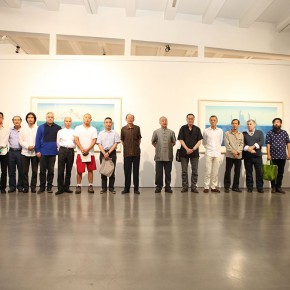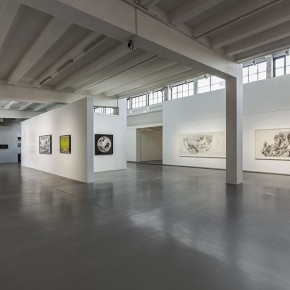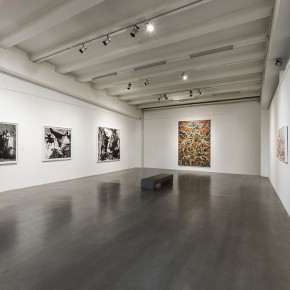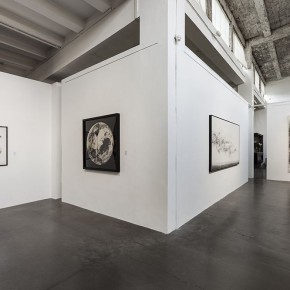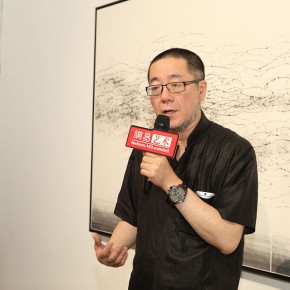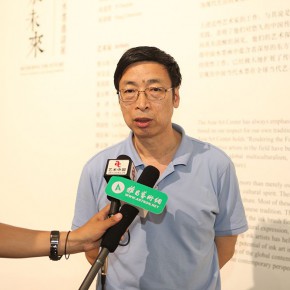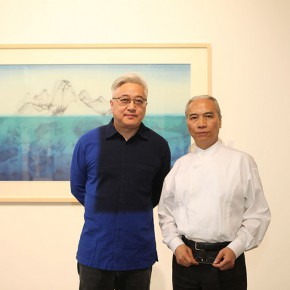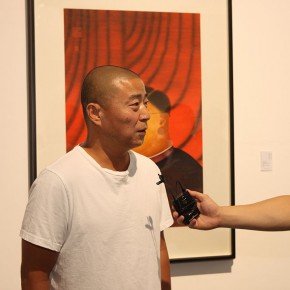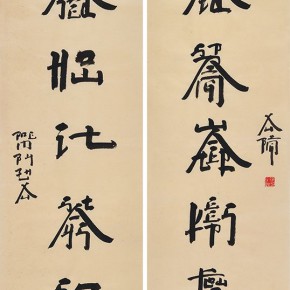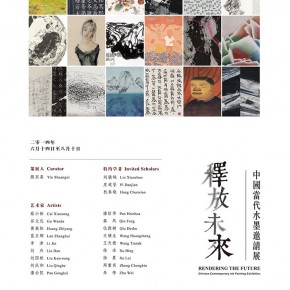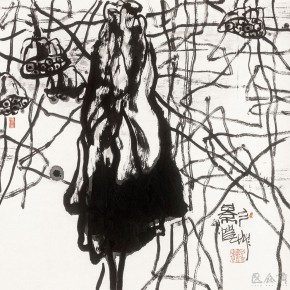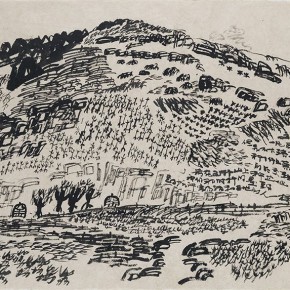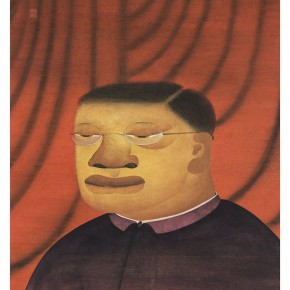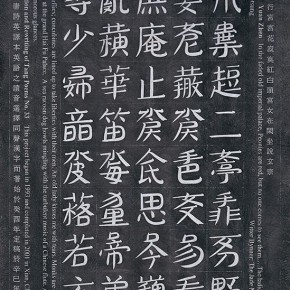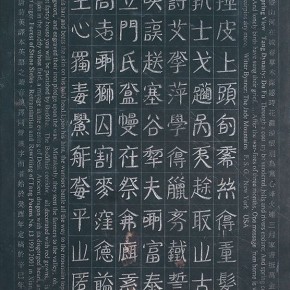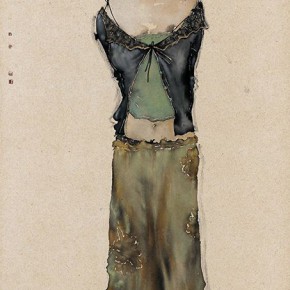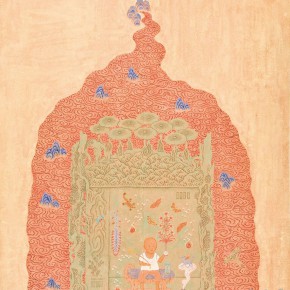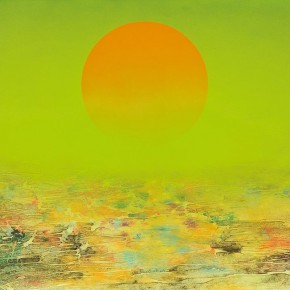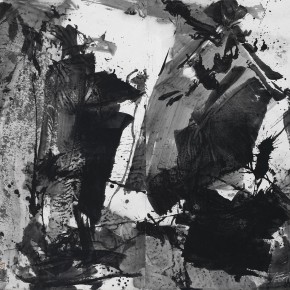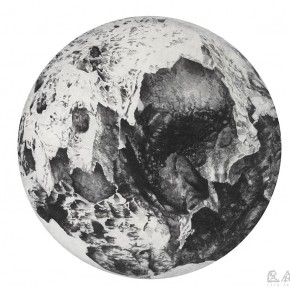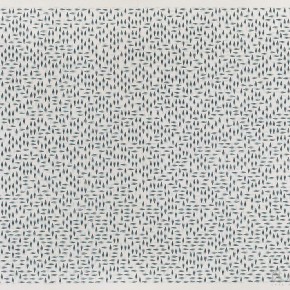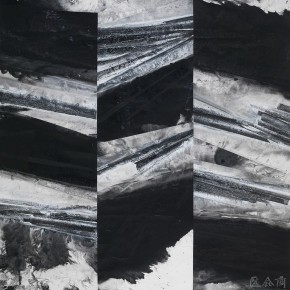
On the afternoon of June 21, 2014, “Rendering the Future – Chinese Contemporary Ink Painting Exhibition” had a grand opening at the Asia Art Center. The exhibition was planned by Yin Shuangxi, while Liu Xiaochun, Pi Daojian, and Hang Chunxiao served as the invited scholars.
Eighteen contemporary ink painters including representative artists in the field: Cai Xiaosong, Gu Wenda, Huang Zhiyang, Lan Zhenghui, Li Jin, Liu Dan, Liu Kuo-sung, Liu Qinghe, Pan Gongkai, Pan Hsinhua, Qin Feng, Qiu Deshu, Wang Huangsheng, Wang Tiande, Xu Bing, Xu Lei, Zheng Chongbin, and Zhu Wei are invited to participate in this joint exhibition which aims to reinterpret contemporary Chinese ink from the perspective of the emerging global multiculturalism, incorporating globalism into the transformation of national cultural themes (traditional culture and contemporary culture).
On the eve of the opening, the curator, invited scholars, and artists to attend the academic forum “Literati’ Gathering”, coming together to discuss the current public perception of Chinese contemporary ink painting and attitudes, as well as the future developing direction and possibility of ink painting. Subsequently, the exhibition curator Yin Shuangxi presided over the opening ceremony, and the opening attracted many scholars, collectors, and the media.
Among the artists in the joint exhibition, Liu Kuo-sung and Pan Gongkai are artists who have emerged from traditionalism and entered contemporary art. They have expanded the content of Chinese painting, with Liu Kuo-sung refining breakthroughs in the expression of media and their abstract language, while Pan Gongkai has developed the spiritual sense of traditional Chinese ink painting. Gu Wenda and Xu Bing proceed from the perspective of contemporary art to critically engage with the cultural and historical progress underlying Chinese painting, and explore the possibility of artistic expression in a variety of ways to explain the era of globalization and cross-cultural understanding. Cai Xiaosong, Liu Dan, and Wang Tiande have deconstructed the lifestyles of Chinese literati and artists, pursuing a modern vision of ancient literati’s favorite spiritual semiotic signs- gardens and forests, ancient scrolls, and stele rubbings. Lan Zhenghui, Zheng Chongbin, Qin Feng, and Wang Huangsheng have developed the art of abstract inkbrush painting to its extreme, while Qiu Deshu and Huang Zhiyang explore abstract combinations of color which affect the rich possibilities of the abstract in Chinese painting. Liu Qinghe, Li Jin, Zhu Wei, and Pan Hsinhua, seek to personalize the experience and to express a modern view of going beyond the mere everyday life, which contains self-deprecating humor, and reflects the Eastern playful approach toward worldly values. Xu Lei adopts a detailed approach to painting traditional cultural elements which are transformed to symbols and fables of modern living, reflecting the modern transformation of an outstanding middle-aged artist renowned for a detailed painting style, in a manner which has already emerged as a leading trend.
These artists’ work more than merely overturn traditional Chinese painting, in fact they reflect the trend of the contemporary spirit for a return to one’s roots within the Chinese cultural spirit. Their experimentation in Chinese painting reflects both their understanding and respect for the rich millennia of traditional Chinese culture. Most of these artists have a robust understanding of the depth of western lifestyles and culture, as well as clear insights into the future trajectory of Chinese traditions. Their artistic exploration, has reorganised the visual sense of Chinese ink painting, and during this process has developed the future of the ink brush fine art. “Rendering the Future” refers to how Chinese ink painting serves to nurture a rich oriental philosophy, mode of thought and cultural expression, which provides important resources to inform cultural development in modern society. The continuing work of today’s outstanding ink artists has helped to greatly expand the arena for artistic language and expression of traditional ink painting, serving to reveal the profound potential of ink art in the future development of global culture. The exhibition will display the liveliness of contemporary Chinese ink with the backdrop of the global contemporary arts scene, promoting contemporary ink art and its unique Chinese cultural values, contributing to the further development of the contemporary perspective of the Chinese public.
Translated by Chen Peihua and edited by Sue/CAFA ART INFO
Photo by Asia Art Center


